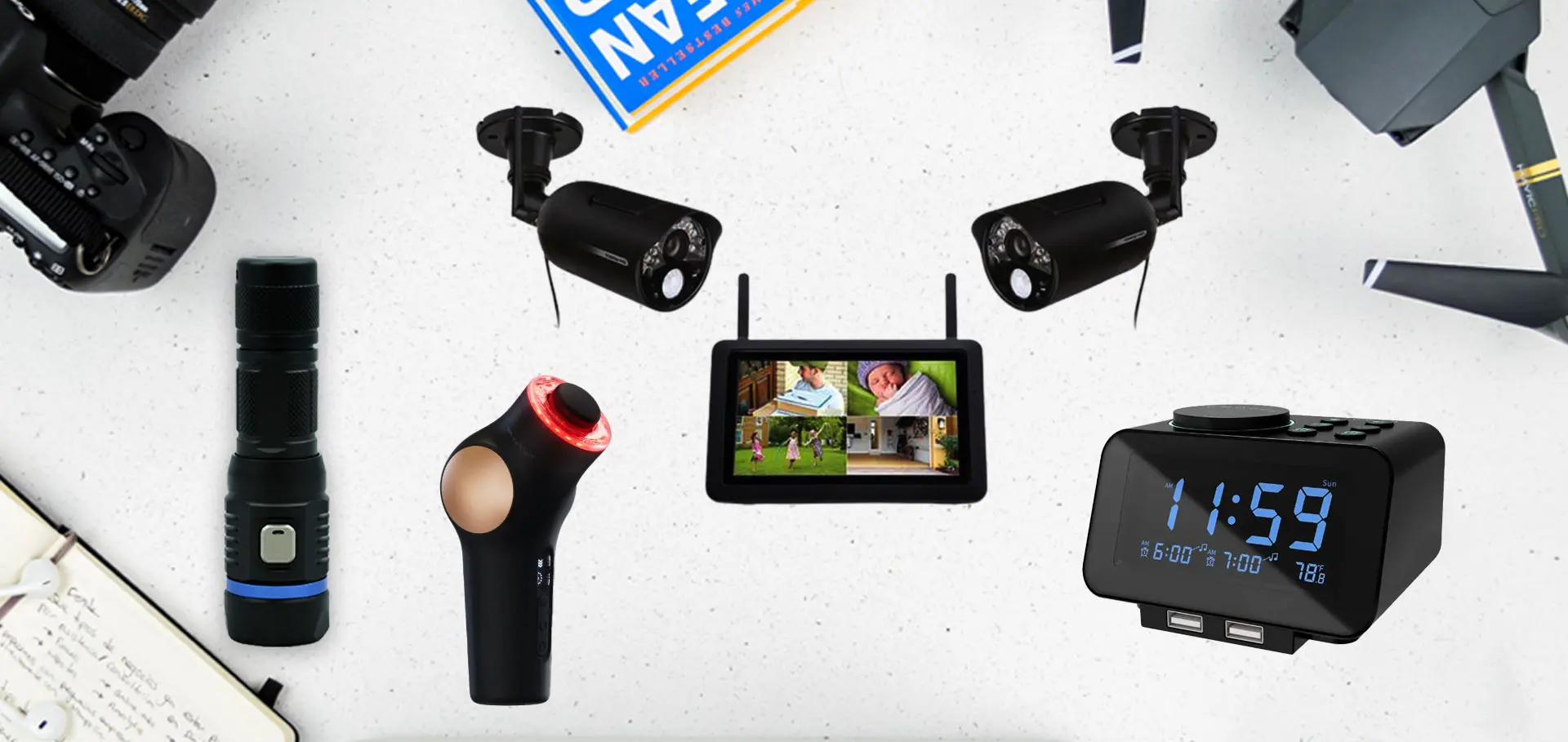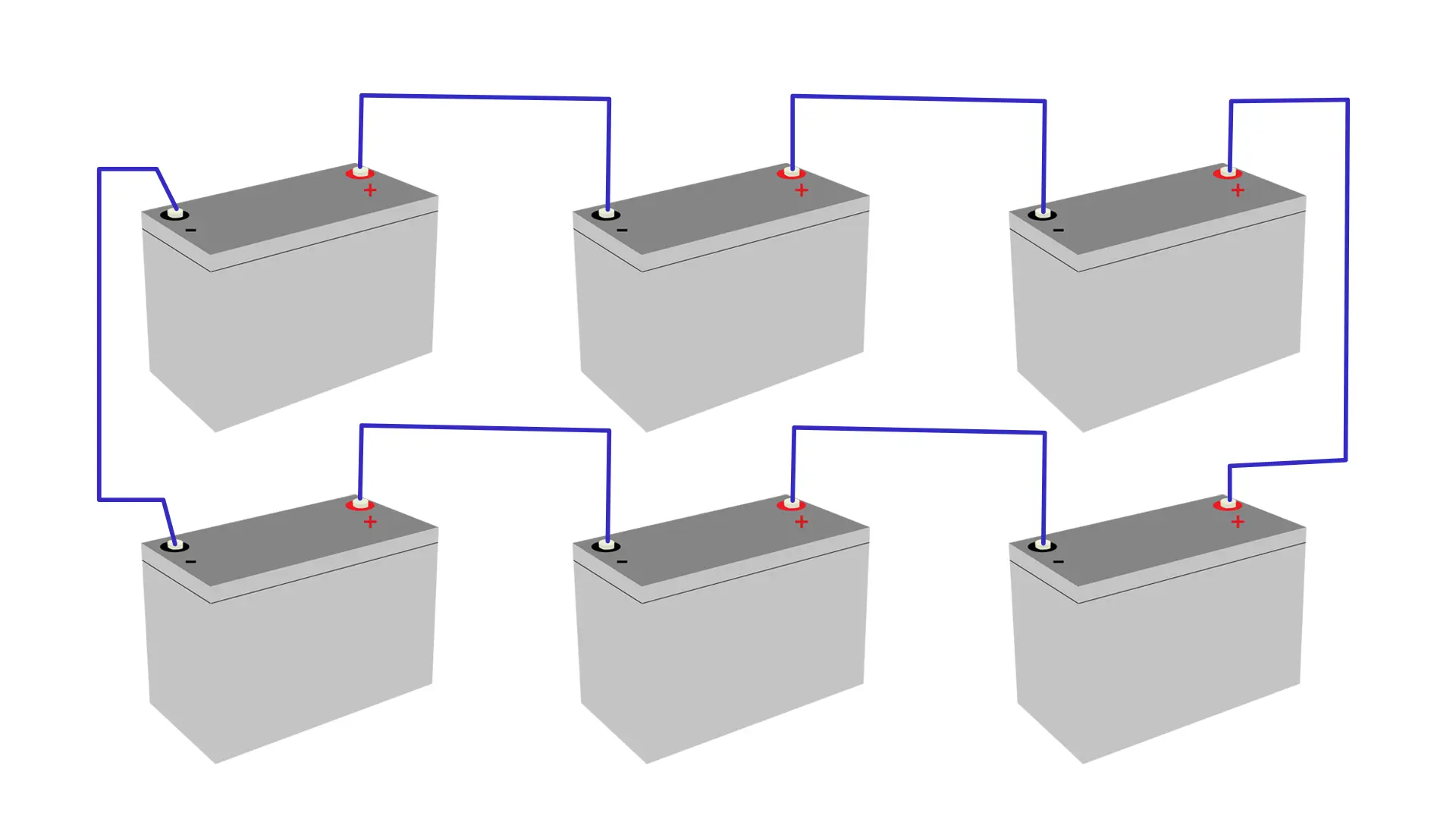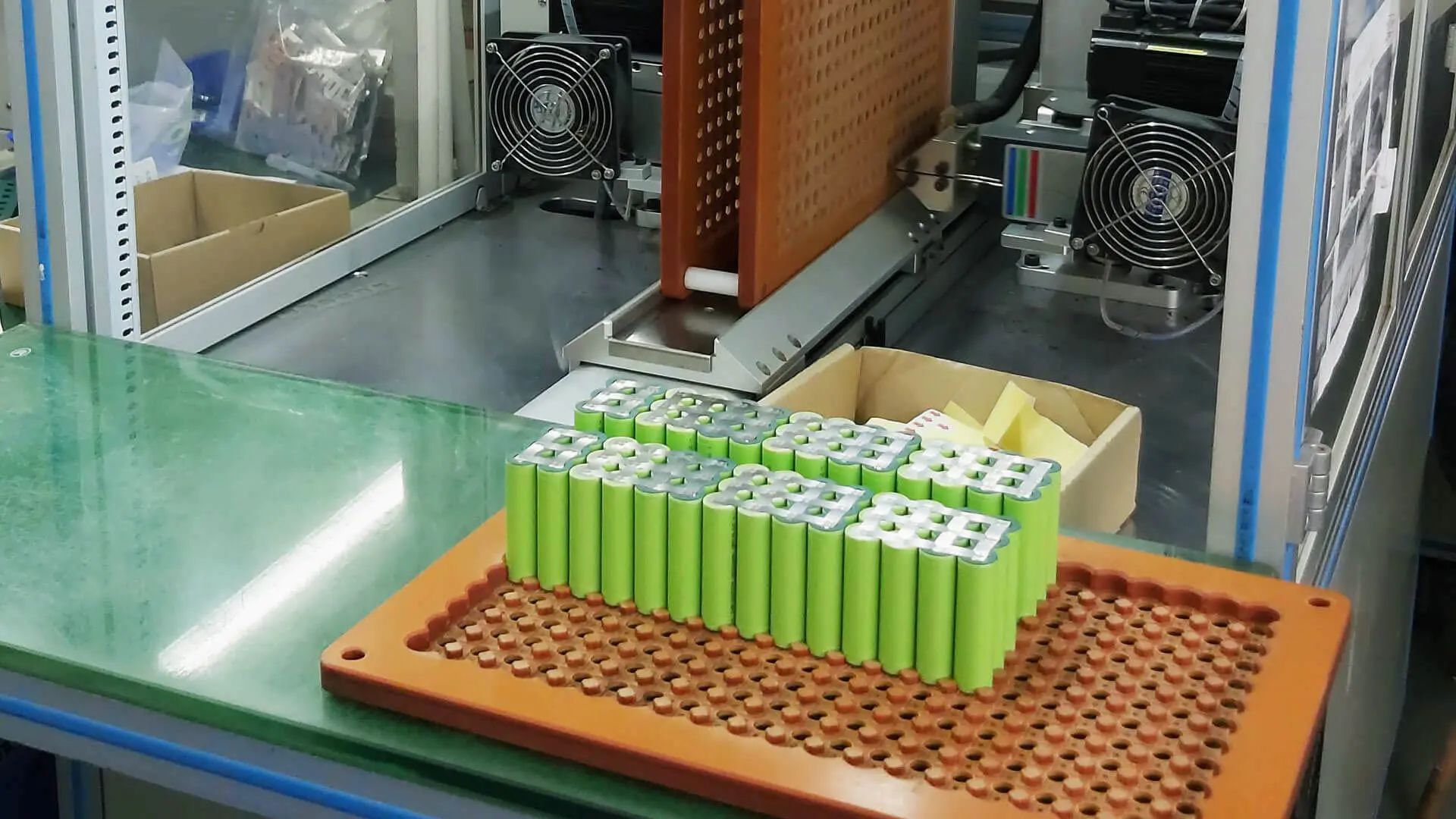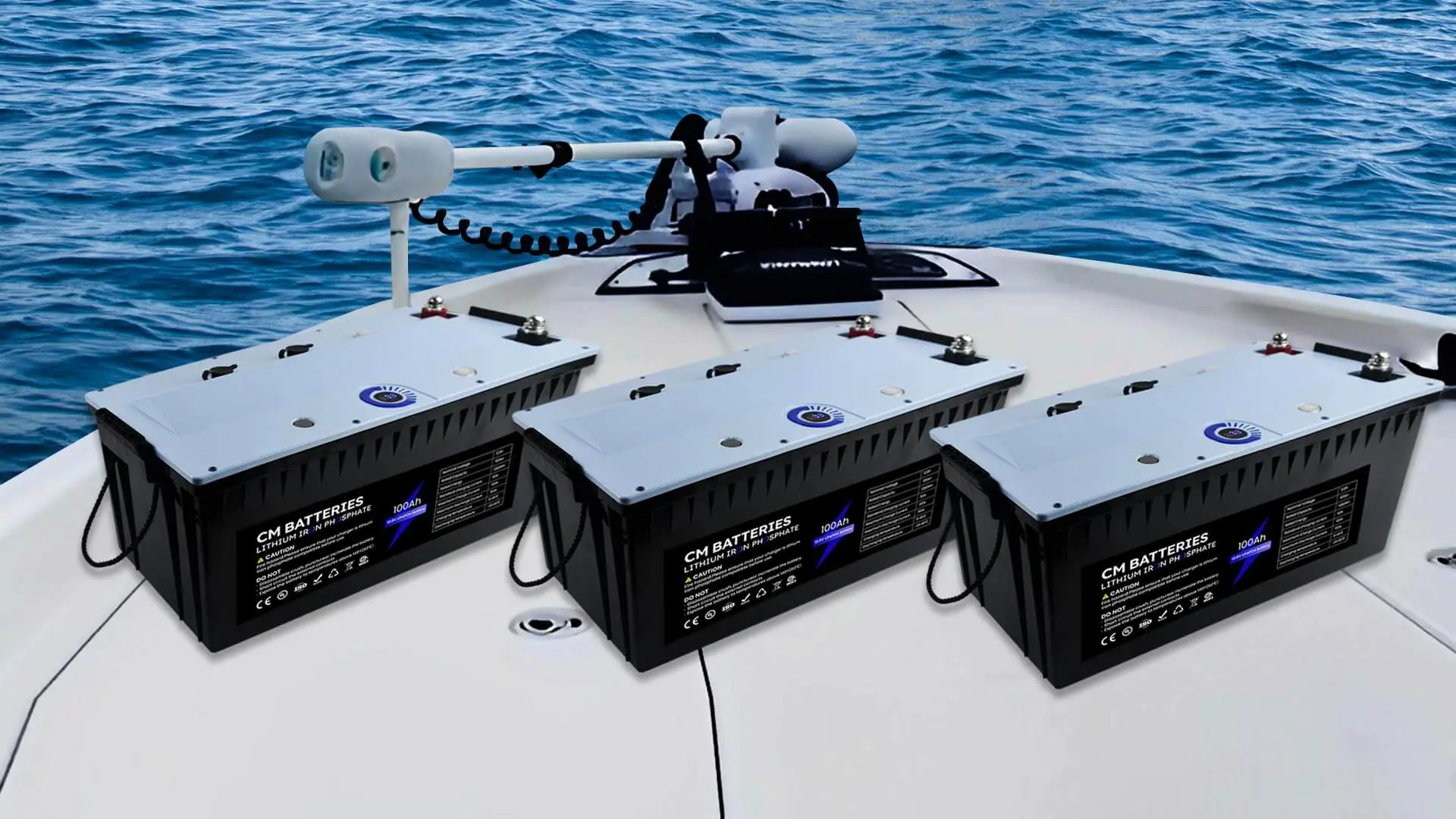As a custom lithium RV battery upgrade solutions brand company, we understand the importance of providing RV manufacturers with cutting-edge replacement RV battery solutions that prioritize safety, durability, and overall customer satisfaction. In today’s rapidly evolving RV market, the transition from traditional lead-acid batteries to advanced lithium-ion technology is not just a trend but a necessity. In this comprehensive guide, we’ll delve into the ins and outs of RV battery replacement, emphasizing why upgrading lithium RV batteries is crucial for enhancing the travel experience for RV enthusiasts.
- 1.Why RV/Travel Trailer Battery Replacement is a Trend?
- 2.Why are Lead Acid Batteries Being Phased Out of Modern RVs?
- 3. Are RV/Travel Trailer Lithium Batteries Worth Upgrading?
- 4. How do I Know When to Replace My RV Battery?
- 5. How to Replace RV Lithium Batteries?
- 6.The Process of Replacing RV House Battery
Why RV/Travel Trailer Battery Replacement is a Trend?
In the past five years, the recreational vehicle (RV) industry has witnessed a significant transformation in battery technology. This evolution makes batteries become an integral part of modern RVs. Modern RV batteries offer more features and less weight, marking a significant shift from traditional expectations.
Why are Lead Acid Batteries Being Phased Out of Modern RVs?
When it comes to RVs, the drawbacks of lead-acid batteries are their density and heavy weight. A single 100 amp-hour sealed lead-acid (VRLA) battery weighs around 30 kilograms. What is worse, outfitting a camper with 600 amp-hours of VRLA batteries weighs approximately 180 kilograms. We have one comparison that 600 amp-hours of sealed VRLA batteries are replaced by 800 amp-hours of lithium batteries, making the weight lighter by 100 kilograms.
Let’s talk about the space. A 100 amp-hour VRLA battery occupies a similar space to a 200 amp-hour lithium battery, and it means that lithium batteries offer twice the capacity of VRLA batteries for the same space.
As shown in the diagram, If you upgrade your 3-piece 100Ah VRLA RV battery to a lithium battery, the capacity will reach 600-800 amp-hours. This is why many RV brands are abandoning original lead-acid batteries and upgrading them with new lithium batteries. If you are looking for an RV lithium battery, contact CMB’s battery pack consultant now.
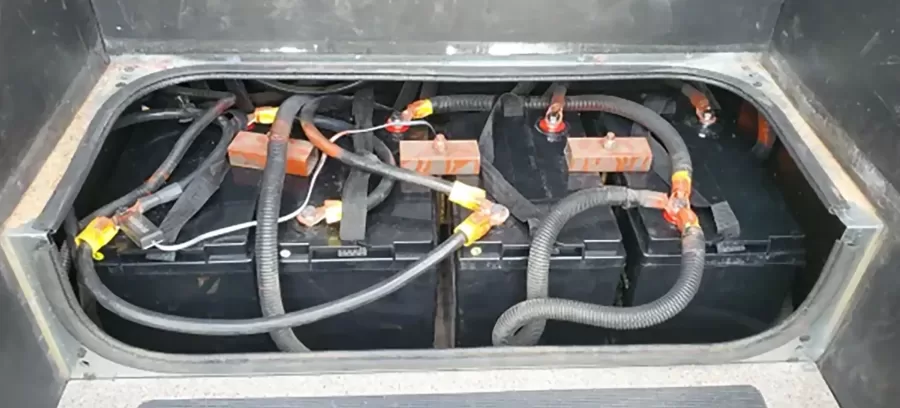
Are RV/Travel Trailer Lithium Batteries Worth Upgrading?
In the previous article discussing RV battery types, we mentioned that lithium batteries are mainly classified into two main materials: ternary lithium batteries and lithium iron phosphate batteries. There’s a significant price difference between these two types. Ternary lithium batteries are characterized by high energy density and higher voltage, resulting in larger battery capacity with the same weight. However, they have the drawback of lower stability. If there’s an internal short circuit or if the positive electrode material comes into contact with water, it will lead to open flames. The chemical reactions involving ternary lithium materials are less stable, and under high temperatures, the electrolyte can rapidly ignite, causing a chain reaction. The ternary lithium materials are more prone to ignition compared to lithium iron phosphate materials.
Below is a detailed comparison table of the key differences between LiFePO4 (Lithium Iron Phosphate) batteries and Lithium Ion batteries:
| Item | LiFePO4 (Lithium Iron Phosphate) | Lithium-ion Battery |
| Chemistry | Lithium Iron Phosphate | Various lithium metal oxides (e.g., lithium cobalt oxide) |
| Energy Density | Moderate | High |
| Voltage | Lower | Higher |
| Safety | Excellent safety profile, less prone to thermal runaway | Potential for thermal runaway if abused or damaged |
| Cycle Life | Longer lifespan, typically over 2000 cycles | Moderate, typically around 500-1000 cycles |
| Charging Rate | Moderate | High, capable of rapid charging |
| Cost | Moderate | Higher initial cost, but potentially more cost-effective over time |
| Environmental Impact | Environmentally friendly, non-toxic, and recyclable | May contain hazardous materials; requires careful disposal |
| Operating Temperature Range | Wider range, better performance in extreme temperatures | More sensitive to temperature extremes |
We can see LiFePO4 batteries offer numerous advantages for RV applications.
Advantage #1: Weight and Size
LiFePO4 batteries with high energy density make them store significant energy in a compact and lightweight design. For example, a CMB 12V 100Ah LiFePO4 battery weighs merely 24 pounds, which is three times lighter than a lead-acid battery weighing 60-70 pounds. It makes LiFePO4 batteries an optimal choice for RV owners seeking to conserve space and minimize weight.
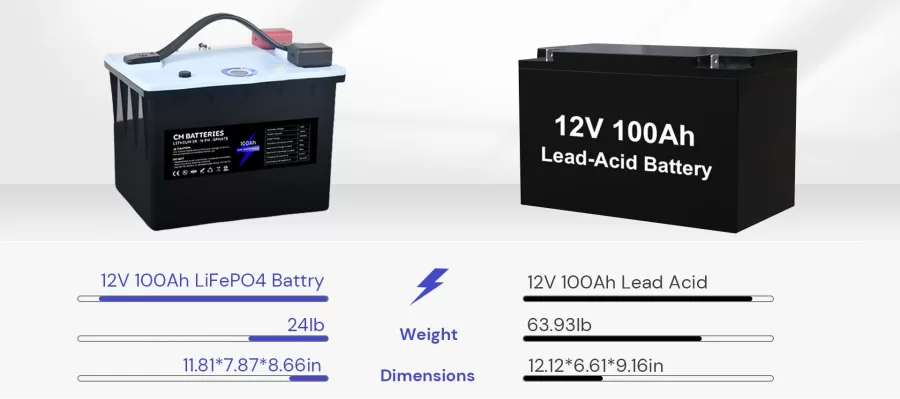
When selecting a lightweight battery, RVers should consider the overall weight distribution of their vehicle. The Uneven weight issues will affect the stability.
Overall, battery weight is a crucial factor in RV battery selection. Opting for lightweight and compact batteries like LiFePO4 ensures optimal performance and fuel efficiency. If you are looking for an RV LiFePO4 battery to replace the Lead Acid battery, contact CMB’s battery pack consultant now.
Advantage #2: Rapid Charging Capability
For RV manufacturers and suppliers, optimizing the charging speed of batteries is paramount in ensuring customer satisfaction and operational efficiency, particularly for off-grid adventures or remote camping experiences.
A prolonged charging time not only constrains the usage of onboard electrical systems but also prolongs downtime, hindering travelers’ ability to resume their journey promptly. Conversely, batteries equipped with rapid-charging capabilities facilitate swift recharges, enabling travelers to swiftly resume their adventures and maximize their enjoyment.
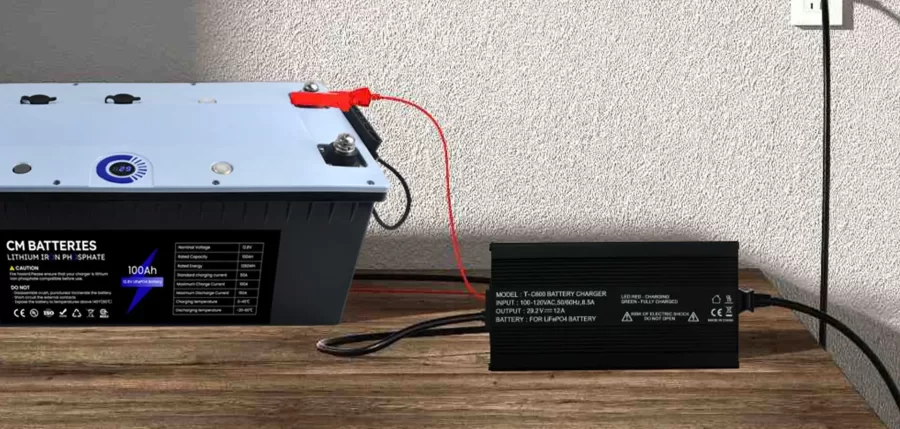
A 12V 100AH LiFePO4 battery can achieve full charge within 2-3 hours, whereas its lead-acid counterpart may require 6-10 hours or more to reach full capacity. Here are some tips for how to charge the 12V 100Ah LiFePO4 Batteries.
Advantage #3: Durability
Lithium iron phosphate (LiFePO4) RV batteries offer durability. Because of the harsh environmental conditions, the durability experience will cause detrimental consequences such as premature battery failure, costly repairs, downtime, and inconvenience for RV enthusiasts.
A robust battery is essential to endure the rigors of RV life, including constant vibration, shocks, and temperature fluctuations.
Longevity emerges as a critical consideration in battery selection. Their durability offers extended lifespans and less expense. LiFePO4 batteries exemplify exceptional durability, outperforming lead-acid counterparts with a lifespan extending 3-5 times longer. While lead-acid batteries typically offer a cycle life of approximately 300-500 cycles (equivalent to 2-3 years), LiFePO4 batteries boast an impressive cycle life ranging from 4,000 to 6,000 cycles.
Investing in LiFePO4 batteries ensures prolonged service life, thereby solidifying the reputation and competitiveness of RV products in the market.
Advantage #4: Maintenance
The level of maintenance required for batteries directly influences the overall camping experience. Regular maintenance will bring inconvenience and cost much time.
However, lead-acid battery maintenance needs to regularly check water levels and monitor the charging processes. Neglecting this maintenance will make the battery lifespan shorter or battery failure.
Conversely, LiFePO4 batteries offer a maintenance-free solution, requiring significantly less upkeep compared to lead-acid counterparts. These batteries eliminate the need for regular water level checks and special charging precautions, thereby streamlining maintenance processes and enhancing operational efficiency.
Advantage #5: Safety
Safety considerations encompass several key areas, with overcharging and undercharging representing primary concerns. Overcharging poses a safety risk, leading to overheating and subsequent battery rupture or explosion.
Another critical safety consideration is the emission of toxic gases during battery operation. Lead-acid batteries release hydrogen gas—a highly flammable substance that may pose an explosion or fire hazard if not properly ventilated. In contrast, LiFePO4 batteries offer a safer alternative, as they do not emit toxic gases, rendering them suitable for use in enclosed spaces such as RVs.
To safeguard RV battery systems, it’s imperative to opt for batteries equipped with advanced safety features. These may include overcharge protection, thermal regulation, and short-circuit prevention mechanisms. Additionally, proper storage and usage, such as ensuring adequate ventilation, in maintain safety standards.
All CM Batteries are equipped with an integrated Battery Management System (BMS), offering comprehensive protection against potential hazards. The BMS safeguards against overcharging, over-discharging, over-current, short-circuit, and high temperatures, ensuring optimal safety and reliability for RV battery systems. By choosing CM Batteries, you prioritize safety and peace of mind on the road.
Lithium-iron phosphate batteries are the superior choice for RVs. Their safety features, lightweight, and exceptional performance align seamlessly with the specific requirements of RVs. We call on RV manufacturers and suppliers to consider integrating these batteries with high quality and longevity. Our engineering team of experts is readily available to provide guidance on the seamless integration and upgrade process for RV batteries.
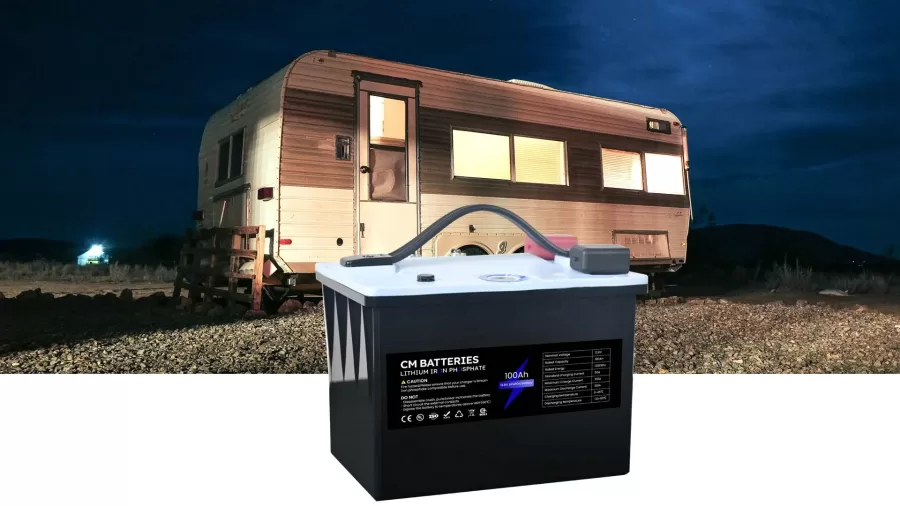
How do I Know When to Replace My RV Battery?
We would like to share information on when to replace your RV batteries.
- Diminished lighting and sluggish electronics
The battery may no longer provide sufficient power to the electrical system.
- Voltage Inspection
Measure the potential difference in the battery circuit. The voltage levels may indicate battery issues requiring replacement.
- Electrolyte Level Examination
For lead-acid batteries, check the electrolyte level using a hydrometer to measure specific gravity. A gravity below manufacturer specifications may signal the need for battery replacement.
How to Replace RV Lithium Batteries?
RV House Battery Replacement Tool List
Upon determining the need for an RV lithium battery upgrade, you’ll need various tools and materials, including:
- New RV battery
- Socket wrench or socket set for removing battery cables
- Battery terminal cleaner or wire brush
- Battery terminal protector or dielectric grease
- Safety gloves and goggles
- Battery hold-down strap or bracket (if necessary)
- Battery charger or jumper cables (optional, for charging the new battery or jump-starting)
- Additional battery cables and wires
Calculate the power for your RV Battery Upgrade
The first step is to confirm the voltage of the power system. Most RVs use a 12V or 24V system. Therefore, opting for a 12V battery (or multiple batteries) is the optimal choice.
Determine the appropriate battery capacity. Lithium Iron Phosphate RV batteries range from 50Ah (ideal for pop-up RVs with modest power demands) to 300Ah (commonly found in Class A motorcoaches).
calculate the power Ah, all devices intended to be powered by your motorhome, and sum up the power requirements for each device.
If you want to connect lithium batteries in parallel or series, please consult the CMB engineer to get the guidance.
The Process of Replacing RV House Battery
1. Record and Photo each Process
Before the battery replacement process, please record and photo each process. Record pertinent information such as battery lifespan, last maintenance date, and any specific maintenance requirements or recommendations. This data will aid in informed decisions when selecting new RV batteries and ensuring they receive appropriate maintenance.
2. Replacing Your RV Batteries
Armed with knowledge about RV battery types and necessary tools and materials, proceed with the replacement process. The following steps will guide you from safely disconnecting the old battery to successfully installing the new one.
3. Disconnect the Old Battery
Turn off all power sources including shore power, generators, and solar panels. Using a socket wrench or pliers, disconnect the negative (black) cable terminal from the battery, followed by the positive (red) cable terminal. Exercise caution to avoid sparking by preventing simultaneous contact with both terminals.
4. Remove the Old Battery
Carefully remove the old battery from the RV and do not damage surrounding components.
5. Clean and Prepare the Battery Box
Before installing the new RV battery, clean and prepare the battery box. Use a damp cloth to remove dirt and debris, and inspect compartments for damage, corrosion, or loose connections. Address any issues promptly to ensure optimal performance and lifespan of the new battery.
6. Install the New Battery
Place the new battery carefully into the battery box, ensuring correct and secure installation. Reconnect the battery cables according to the recorded setup, starting with the positive (red) terminal and ending with the negative (black) terminal. Thoroughly inspect all connections for security and proper tightening.
Finally, close the battery box and reactivate any previously turned-off power switches. Click here to learn about the advantages and disadvantages of series and parallel lithium iron phosphate batteries before you start!
7. Dispose of Your Old Caravan Battery Properly
Following the successful replacement of your RV battery, dispose of the old battery correctly. Old batteries contain hazardous materials and must be handled and disposed of responsibly.
Numerous local hazardous waste facilities and auto parts retailers accept old RV batteries for proper disposal. Always wear protective gloves and goggles during the disposal process, and consult with your local government or recycling center for precise disposal guidelines applicable in your area.
In the competitive landscape of the RV industry, By embracing custom lithium RV battery upgrades, manufacturers should elevate the safety, durability, and overall performance of their RVs, ultimately enhancing the travel experience for RV enthusiasts worldwide. As a pioneer in the field of lithium-ion technology, we are committed to partnering with RV manufacturers to drive innovation and deliver solutions that exceed expectations. Together, let’s power the future of RV travel with cutting-edge battery technology.



